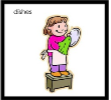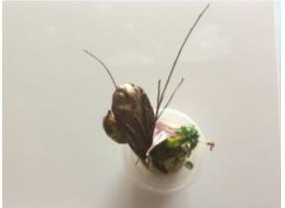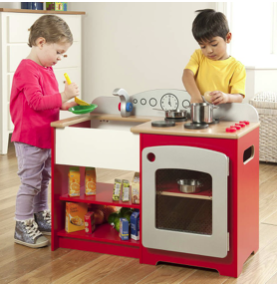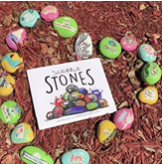Monday 18th May
I have lots of cousins by lots I mean there are 14 of us and as children we often hung out together at my Grandma’s house. One of our favourite things to do was create shows precariously balancing on my Grandma’s windowsill we would jump down from behind the curtains and burst into song or tell a joke. We would often gather sheets and dressing gowns, throws and adults jackets to make costumes for our stage shows and we had the time of our lives.
We also invented a game called ‘Spook a Look’ and in this game one of us would be the ghost and everyone else hid – the ‘ghost’ would make spooky noises and search the house and if the ghost found you then you became a zombie and had to help the ghost find the others. The last one found was the winner.
Another thing we did was make dens – using the same sheets and throws and jackets we’d drape them over chairs and tables and create dens or as my big brother called his ‘a base’ – here we made a battle ground, a secret hideaway, a cave to name a few.
We didn’t have loads of toys and there was no sign of a computer to entertain us but my childhood memories of this are all amazing and the memories created are fantastic. Basically using our imagination and things we could find around about us we invented some great games.
So what have you got lying around to entertain you?
Imaginative play ideas to try with your children.
While the imaginative play ideas below can help you kick off some amazing games of pretend with your kids, it’s important to avoid imposing your own idea of what the game should be on them. If your kids say the rug you bought for an imaginary picnic is a patch of deadly quicksand, go with it – and start looking for a branch to pull them out!
· Invent a game decide on a few rules and try it out – e.g. Spook-a-look.
· Put on a performance. It’s the ultimate improv exercise: using whatever props you have to hand (sheets, throws, jackets, puppets, dolls, action figures, hairbrushes, boxes can all help), act out a play/song with your child.
· Cook an imaginary meal. Children love to act out the ordinary things their parents do. Help your little one get into the role of future chef by laying out cooking equipment, “ingredients”, or even a drawn-out hob for them to play with. Let them serve you up a meal, and prepare to pretend that mud pie is your favourite.
· Throw picnics and tea parties. Bad weather outside? No problem. Set up your own indoor picnic with a picnic rug, your child’s favourite toys and a few kitchen-related props. Remember: pinkies up at all times, and never fail to ask whether Teddy would like more tea or cake. Etiquette matters.
· Play super heroes. Don a cape or choose an action figure and embark on the greatest fight between good and evil that the world has ever seen. It’s even more fun if you play the villain and let your child defeat you. Perfect your “I’m meeeellllltiiiing” speech, and remember that you would have gotten away with it, too – if it weren’t for those pesky kids . . .
· Turn a box into . . . anything. One of the best things about imaginative play is that you don’t need any special props to do it. For example, an ordinary large-ish cardboard box can become a house, a car or an aeroplane. Flatten it out, and you have a desert island. Give your little one a few boxes and watch for a bit to see what they do. Jump in once they’ve decided what the game is going to be.

· Plant up a (fake) garden. They might only be cardboard cutouts of flowers and imaginary vegetable patches, but your child can still have fun watering, weeding and looking after them. All the fun of a real garden, with none of the risk.
· Build a city. Toys like Lego and building blocks can be useful props for this game. Help your little one build a metropolis, then run the town together.
· Clean the house. Ever turned around after doing a household chore, only to find a little helper copying you? Kids are often strangely fascinated by housework. The next time you’re vacuuming or mopping the floor, give your child a prop so they can follow you around the house and take part.
· Run a shop. If your child owned a shop, what would they sell? Help your child stock their shop’s cupboards, pretend to be a series of customers, and use (fake) money to buy their wares.
Ideas from https://www.persil.com/uk/dirt-is-good/real-play/what-is-imaginative-play.html
Remember, the benefits of imaginative play can extend to you too — so connect with your inner child and lose yourself in a world of imagination.
Written by Carol Munro.




























 I also recently stumbled across a lovely story I had never heard of before called ‘Scribble Stones’ by Diana Alber.
I also recently stumbled across a lovely story I had never heard of before called ‘Scribble Stones’ by Diana Alber.
